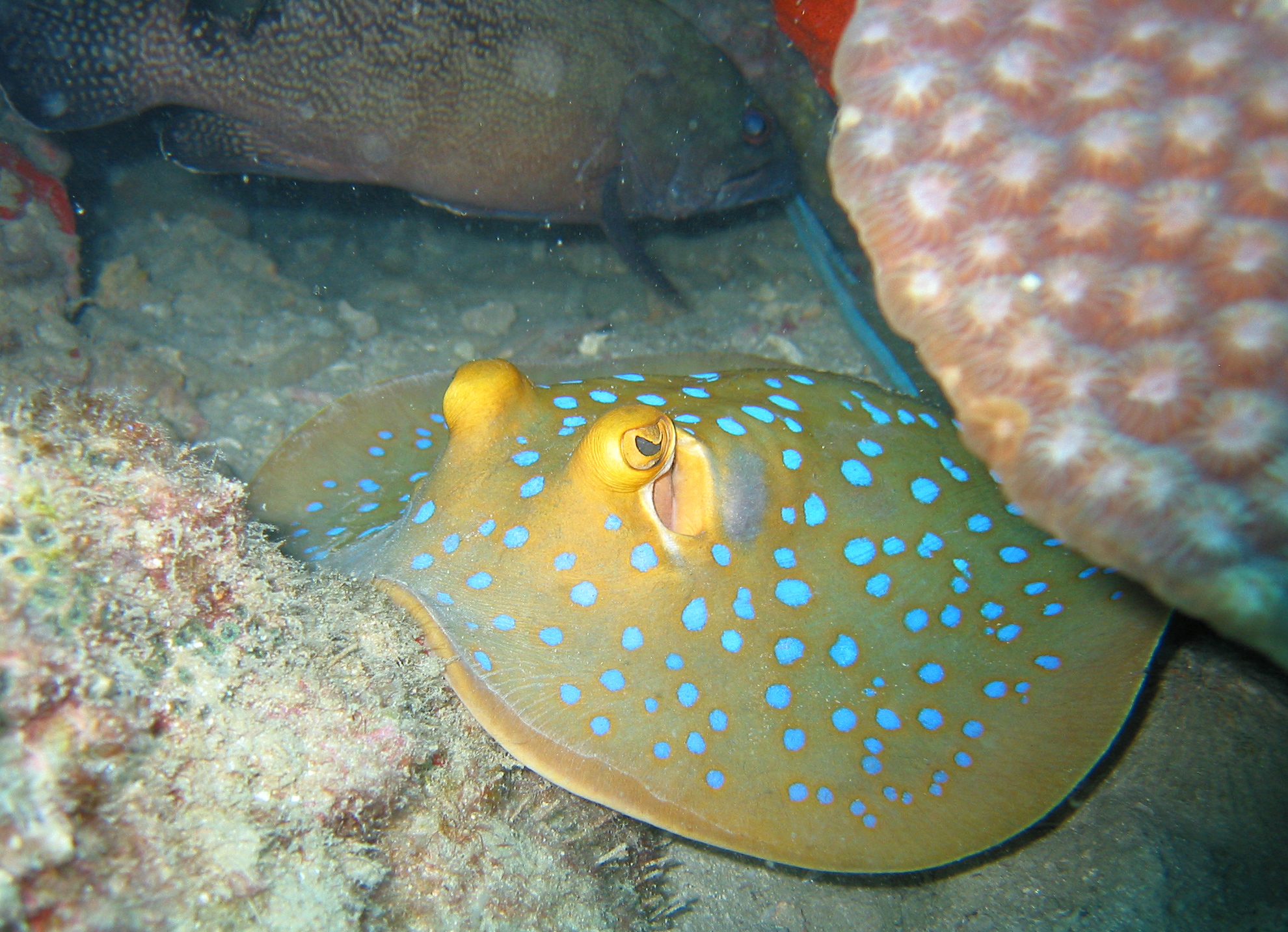
“Noah’s Ark,” by Edward Hicks. Philadelphia Museum of Art. Public Domain, USA. Image: wikimedia
Coral reefs cover just 1% of the ocean floor but support 25% of all marine life. According to The Ocean Agency’s founder Richard Vevers, even if we meet the targets of the Paris Agreement, we may lose 90% of our coral reefs by mid-century due to ocean warming and acidification that causing coral reef bleaching. Working with the Centre for Excellence in Environmental Decisions at the University of Queensland, The Ocean Agency and a team of scientists selected 50 coral reefs that are most likely to survive climate change with a little help. The reefs chosen are a sample “large enough to allow protection of reefs in all major regions” (UQ 2017).

“Coral planting and reef restoration,” by Profmauri, 2011. Creative Commons 3.0, wikimedia.
Given this ‘Noah’s Ark’ for coral and marine life, how can this precious resource be preserved? Much like the examples of humans helping Nature as in the National Trails System, Roman Aqueducts or the New River, natural coral reefs may get a boost from engineering innovations. Coral can be grown in a lab, where growth that could take 100 years in the ocean can be accomplished in two years under laboratory conditions. Once the tiny corals are ready for transplanting, they can be placed on reefs that are suffering but still able to recover; it’s a process known as “reskinning.”

“The Silent Evolution” by James deCaires Taylor. Photographer, allenran 917, 2014. Creative Commons 2.0.
Another option: forming new coral reefs using underwater sculptures like those created by James deCaires Taylor for the Australia’s Museum of Underwater Art on Great Barrier Reef, and Mexico’s Mesoamerican Reef, largest in the Western Hemisphere, for the Museo Subacuático de Arte. Some debate whether such sculptures are helping or harming marine life. Similar underwater sculpture gardens created by Angeline Chen and Kyle Block, founders of Global Coralition, are located in Koh Tao, Thailand, and in the Dominican Republic, where art honors the traditional water deities of the Arawak/Taino cultures of the Caribbean.

“Blue Spotted Stingray in Koh Tao, Thailand coral reef,” photographer Jan Derk, 2004. Generously dedicated to the public domain by Jan Derk. Creative Commons. With appreciation to Jan Derk.
Vevers worried that coral is an emergency that is invisible to all but divers and the denizens of the ocean. To make the invisible visible (coincidentally the theme for World Water Day 2022 referencing groundwater), The Ocean Agency reached out to Jeff Orlowski and Larissa Rhodes to collaborate on a Netflix film: “Chasing Coral.” During filming, the most dangerous coral bleaching event in history occurred. The film debuted at Sundance and has helped to make coral’s plight more accessible. Watch the film here.

“Coral reef locations,” by NASA, 2006, from Millennium Coral Reef Landsat Archive. Public Domain. 50 are chosen for “Noah’s Ark” preservation. For information on each reef, visit http://seawifs.gsfc.nasa.gov/landsat.pl
Art may help to raise awareness, and respect, for the world’s coral reefs. In addition to nurturing 25% of marine life, coral provides 1 billion people with food, jobs, and income that generates $375 billion in economic benefits. Coral reels are not visible to most of us, so they may be out of mind. But there is much each of us can do. Recycling plastic that can harm reels and marine life, being cautious about the use of some sunscreens when enjoying the beach, or by supporting ocean sustainability and coral reef regeneration, we have an opportunity to build a modern-day Noah’s Ark for coral.
Beyer, Hawthorne L, et al., “Risk-sensitive planning for conserving coral reefs under rapid climate change.” 27 June 2018. Conservation Letters, Volume 11, Issue 6, e12587. https://doi.org/10.1111/conl.12587
DeCaires, Jason Taylor. “An underwater art museum, teeming with life.” TED talk. December 2015. https://www.ted.com/talks/jason_decaires_taylor_an_underwater_art_museum_teeming_with_life?language-en
Drury, Madeleine. “Are giant underwater sculptures helping or harming marine life?” 07/09/2021. Euronews.com. https://www.euronews.com/green/2021/o7/13/are-giant-underwater-sculptures-helping-or-harming-marine-life
Global Coralition. https://www.globalcoralition.org
Netflix and Exposure Labs: “Chasing Coral,” Film. https://www.youtube.com/watch?v=aGGBGcjdjXA
The Ocean Agency, “50 Reefs.” Video: https://youtu.be/pFfVpO_q4sg
University of Queensland, Global Change Institute. “Which reefs are the most important to save?” 24 February 217. https://www.uq.edu.au/news/article/2017/02/which-reefs-are-most-important-save
Vevers, Richard. “Interview,” https://youtu.be/8hMAgr4p7Sg
Wilson, Amy. “Microfragmentation: a breakthrough for coral reef restoration.” 18 September 2018. Medium.com. https://medium.com/@amykwilson/microfragmentation-a-breakthrough-for-coral-reef-restoration-6a2e86c4e2
Building the World Blog by Kathleen Lusk Brooke and Zoe G. Quinn is licensed under a Creative Commons Attribution-NonCommercial-NoDerivs 3.0 Un

